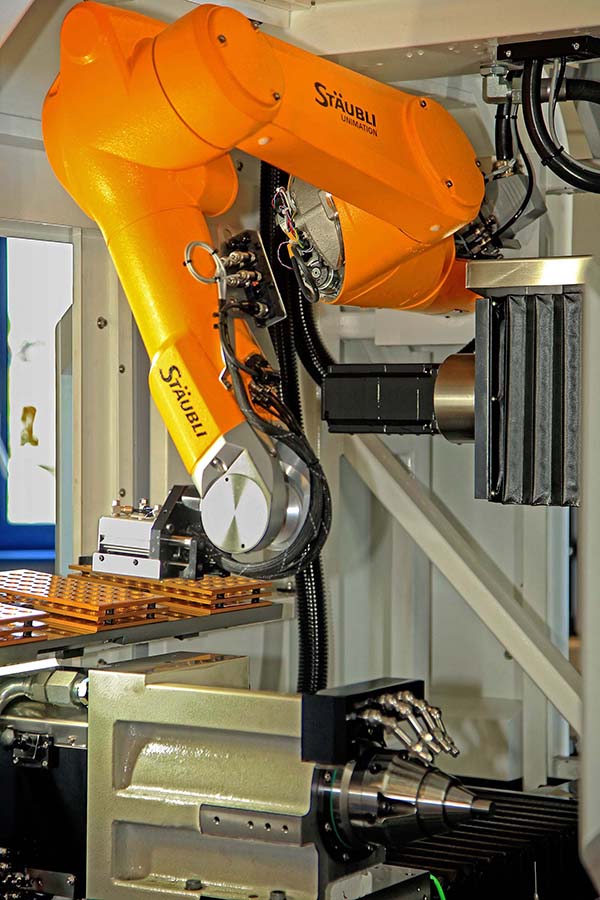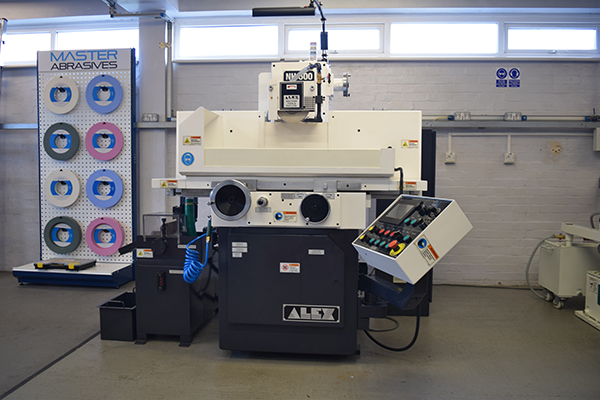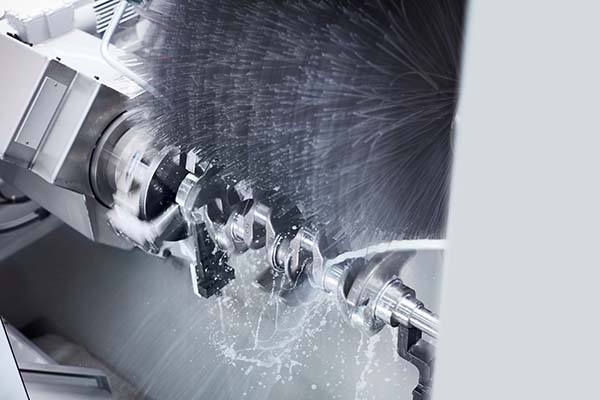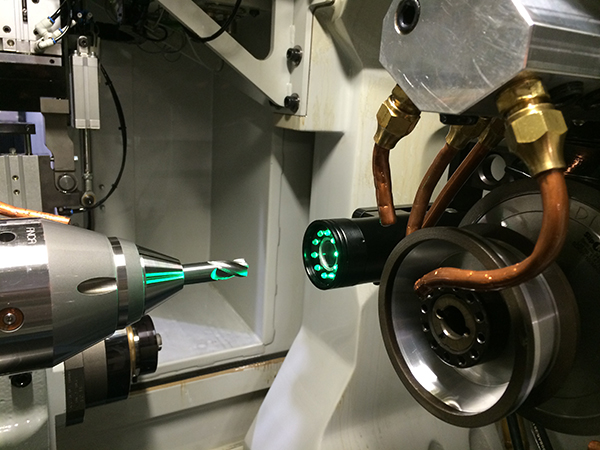Swiss company Strausak AG, which produces CNC grinding machines for manufacturing and re-sharpening solid-carbide tools, wanted to offer customers the option to automate the loading and unloading of workpieces into and out of the spindle that rotates the workpiece in its U-Grind series machines.

The problem was that, to achieve high tool accuracy, an HSK 50 hydraulic expansion chuck with a diameter tolerance of only a few hundredths of a millimetre has to be employed, rather than a conventional collet with automation-friendly open tolerances.
To position the carbide blank or tool to the required level of precision, Strausak turned to robot manufacturer Stäubli, which now supplies the automation solution based on a compact, six-axis industrial robot. The position of each CNC rotary axis is controlled by a Heidenhain EQI 1100 absolute inductive rotary encoder with 18-bit resolution. Having reliable positional data fed back back to the NUM control on the U-Grind allows the robot gripper to manipulate the workpiece to within 50 µm.
Strausak’s managing director Alexandre Condrau says: “We were happy that Stäubli partners with Heidenhain for its rotary encoder requirements, as the compact dimensions of its inductive products suit our application. We also have CNC positioning of the swivelling grinding wheel head on our machines, and to achieve the necessary precision we use a Heidenhain ERA 4000 incremental angle encoder.”
Strausak sees further development possibilities that could help its customers even more. The company is currently working on programming the robot to re-grip the workpiece and readjust its insertion distance in the hydraulic chuck to enable the machining of very long tools, for instance.
For further information www.heidenhain.co.uk























